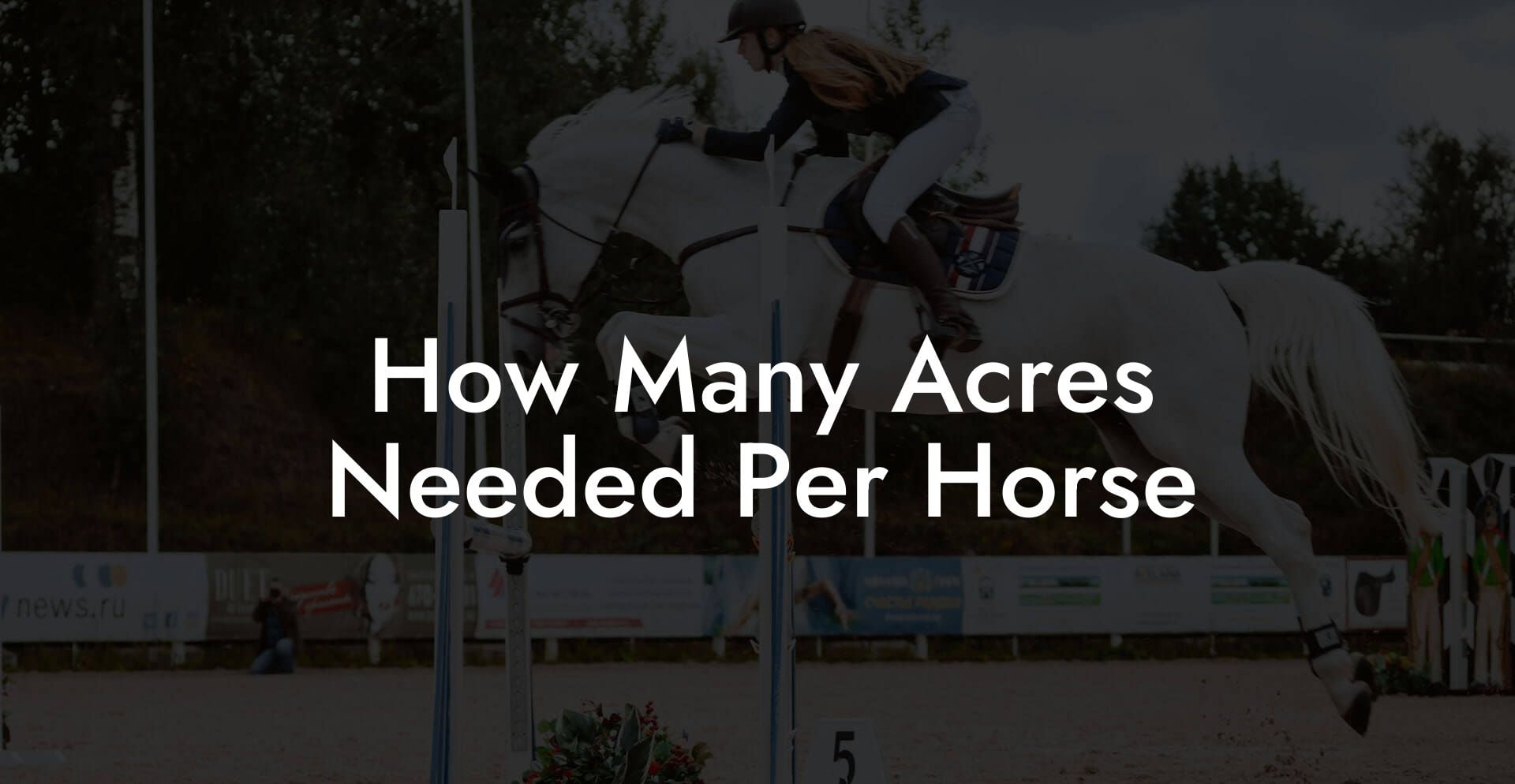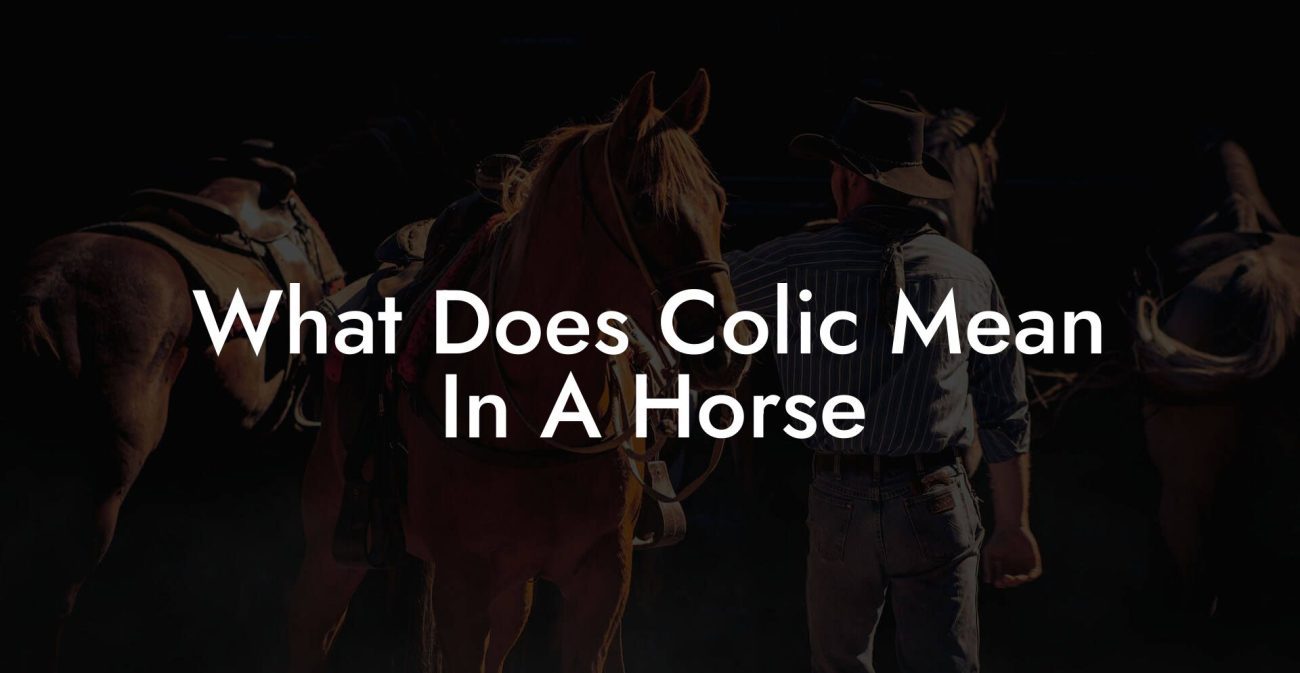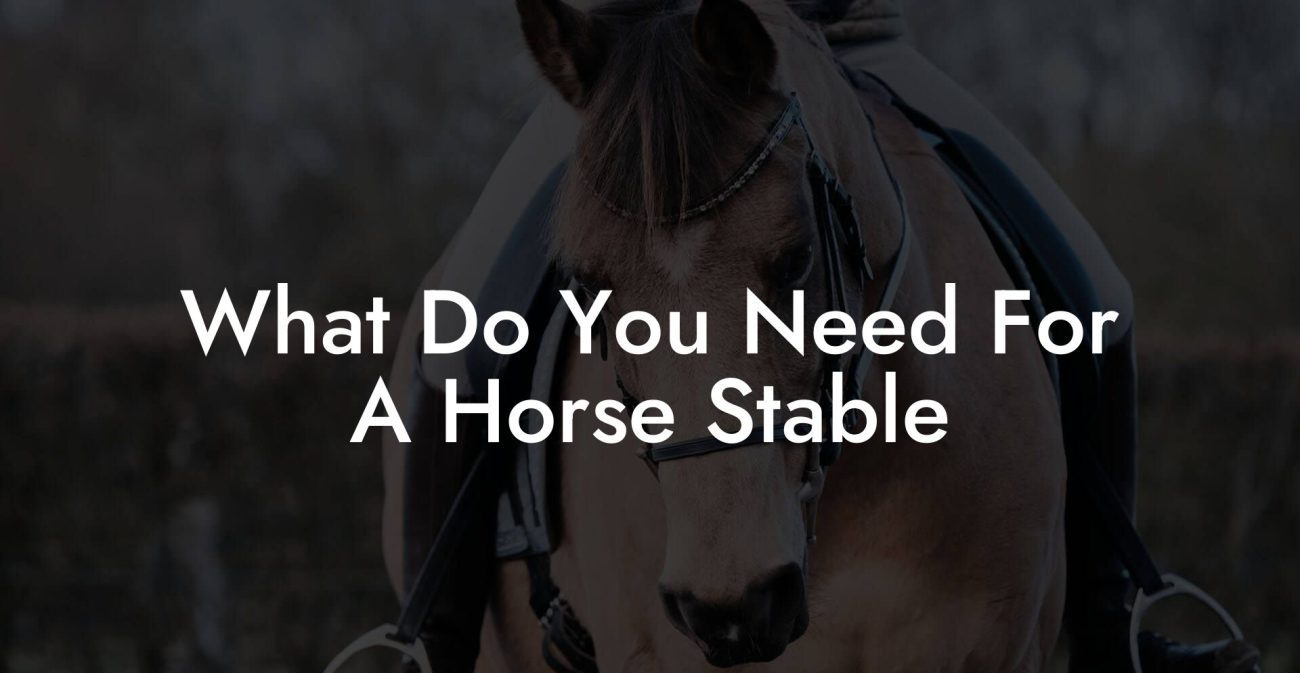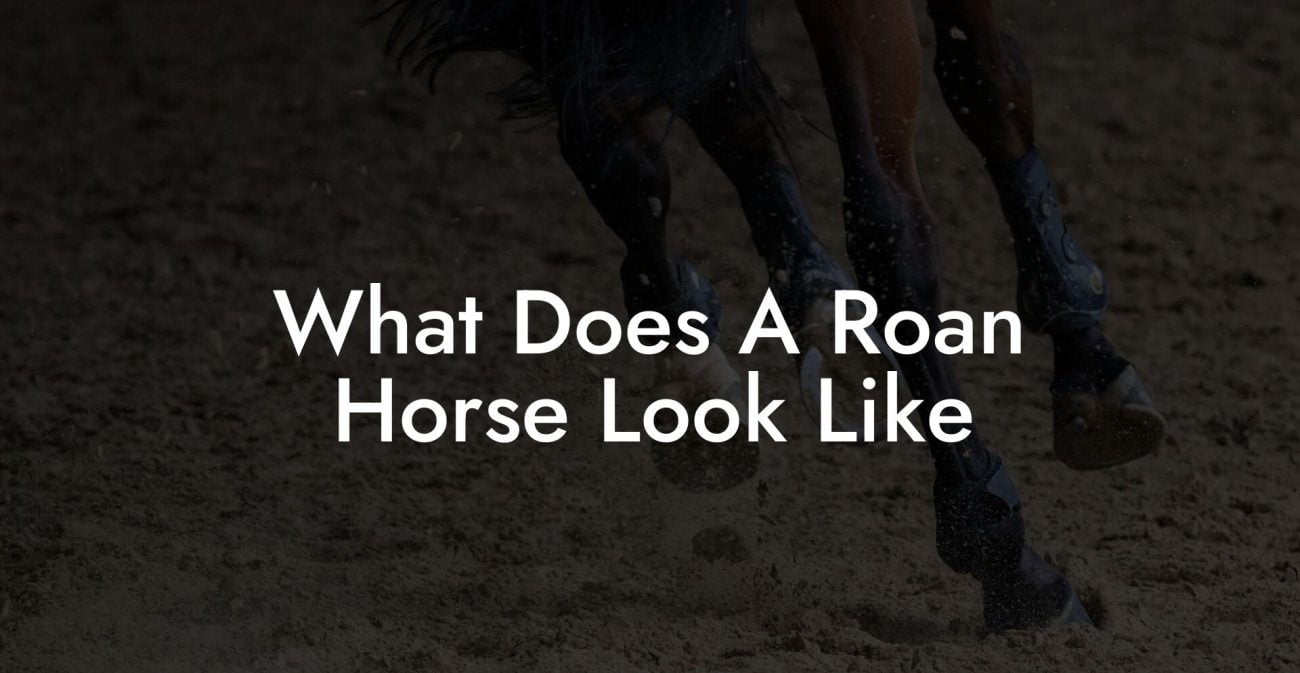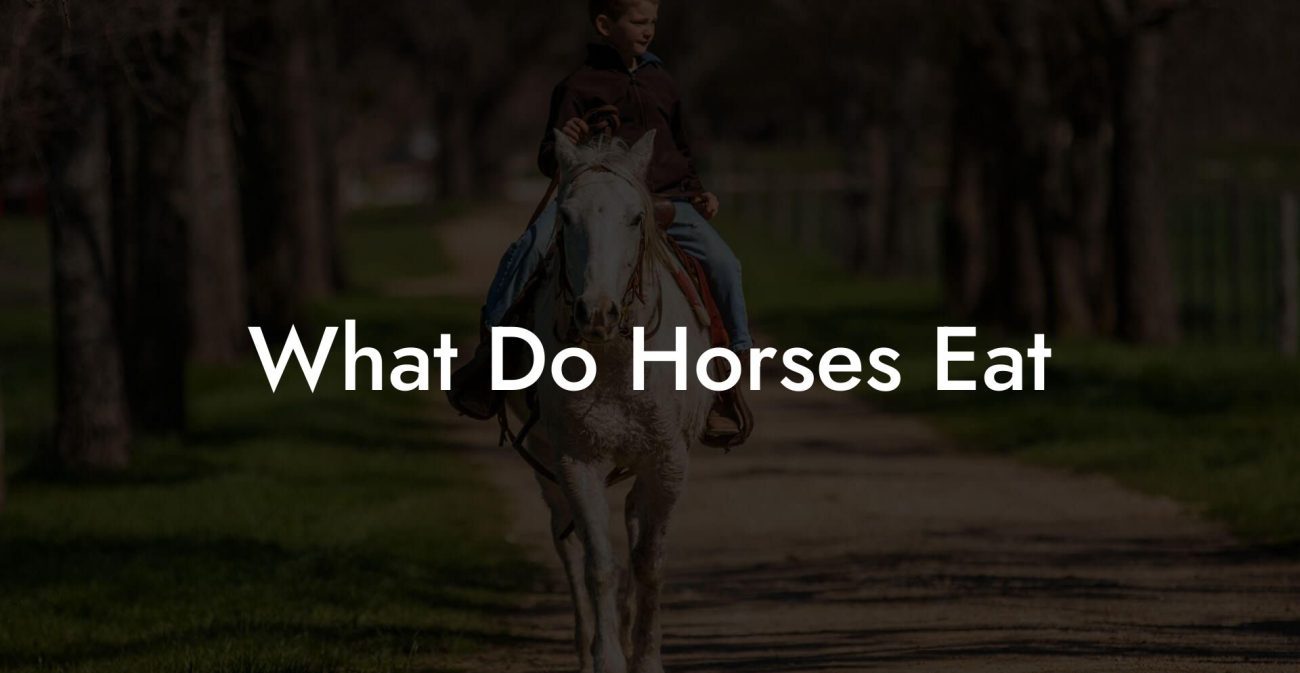When it comes to horse ownership, the conversation about land isn't just about square footage – it's about creating a vibrant, sustainable ecosystem for your four-legged friends. Picture this: You and your spirited equine companion, frolicking across a lush, open pasture that offers just the right amount of room to run, graze, and dream under the open sky. In today’s world, where Gen-Z and millennials are reshaping traditional lifestyles, figuring out "How Many Acres Needed Per Horse" is more than a backyard calculation; it’s an art form backed by science, empathy, and a love for sustainable living.
Quick Links to Useful Sections
- The Basics: Understanding the Horse Pasture Equation
- Decoding the Acreage Conundrum: More Than Just a Number
- Historical and Modern Perspectives on Horse Acreage
- Factors Influencing Your Specific Acreage Needs
- 1. Pasture Health and Grass Quality
- 2. Rotational Grazing Systems
- 3. Horse Workload and Performance Demands
- 4. Climate, Weather, and Seasonal Changes
- 5. Soil and Topography
- General Guidelines: How Many Acres per Horse?
- Calculating Your Specific Acreage Needs
- Conduct a Pasture Productivity Test
- Estimate Forage Intake
- Using Land Management Software
- Pasture Management: Techniques for a Thriving Equine Environment
- Rotational Grazing
- Soil Health and Fertilization
- Irrigation and Water Management
- Fencing and Shelter Considerations
- Expert Insights and Real-Life Stories
- Case Study: Urban Equestrian Turning a Backyard into a Pastoral Paradise
- Case Study: Sustainable Ranching Meets Modern Technology
- Community Voices: Tips from the Field
- Enhancing Land Value through Sustainable Practices
- Planning Future Acreage: What if You Want More?
- Creative Land Management
- Partnerships and Community Grazing
- Investing in Future Expansion
- Resources and Community Support: Your Next Steps
- Equine Innovations: The Future of Horse Pasture Management
- Your Path to a Harmonious Equine Lifestyle
- Equine Wisdom: Frequently Asked Questions
- Your Journey to a Harmonious Equine Lifestyle: More than Just Acres
The Basics: Understanding the Horse Pasture Equation
At the heart of our discussion lies a simple equation: the acreage you provide influences the quality of life for your horse. But, as with most things in life, the answer isn’t a one-size-fits-all number. There’s a dynamic interplay between the type of horse you have, the quality of your soil, your local climate, and even the management practices you adopt. Enthusiasts and professionals have long debated the ideal acreage, with recommendations ranging anywhere from 1 to 3 acres per horse for pasture grazing alone.
Horses are natural wanderers. Their grazing patterns, exercise routines, and even digestive systems are adapted to a lifestyle that includes ample space. Providing insufficient acreage can lead to overgrazing, soil erosion, and a host of health issues for your equine buddy. Conversely, too much space without proper management might result in wasted land and increased maintenance efforts.
For the modern horse lover, the pasture is not only a space for exercise – it’s an outdoor sanctuary where horses connect with nature. Understanding how much land your horse truly needs requires diving into factors beyond just the number of acres, such as pasture quality, grazing rotation, and environmental sustainability.
Decoding the Acreage Conundrum: More Than Just a Number
While the common advice might suggest that “1 acre per horse” is a practical benchmark, the reality is nuanced. Let’s break down the core components that influence acreage requirements:
- Pasture Quality: Nutrient-rich, well-fertilized grassland offers a much higher grazing value than barren or overused land. High-quality pasture can support more horses per acre without risking overuse.
- Horse Type and Use: A high-performance racehorse or show jumper may have higher nutritional and exercise demands than a retired companion horse. Breed, size, and age all contribute to the overall space requirement.
- Climate and Seasonality: In regions with long growing seasons, pastures can recover and provide ample grass throughout the year. In dryer climates, supplemental feed and more space may be necessary to prevent overgrazing.
- Pasture Rotation: Employing a rotational grazing system allows fields to rest and recover. This can effectively lower the acreage needed by maintaining pasture health over time.
- Management Practices: Fertilization, weed control, and the strategic use of silvopasture (integrating trees for shade and natural forage) can all impact the effective grazing area.
By analyzing these factors, it becomes clear that the “right” number of acres is a dynamic figure. Modern equine management often relies on a tailored approach, taking into account not only average guidelines but also the unique characteristics of your land and horses.
Historical and Modern Perspectives on Horse Acreage
Historically, horses roamed vast prairies with minimal boundaries, inspiring the myth that they require endless open spaces. In traditional farming communities, however, land was both a resource and a responsibility. Pasture management evolved as a method to balance the natural behaviors of horses with practical considerations of crop rotation and land use.
Fast-forward to the present day, where technological advances and a deeper understanding of ecology have reshaped our approach. Modern horse enthusiasts – from urban equestrians to suburban hobbyists – are merging old wisdom with contemporary sustainability practices. Innovations in pasture monitoring, mobile apps for grazing management, and eco-friendly fertilization techniques allow for smarter, data-driven decisions about land allocation.
The blend of historical insight, environmental stewardship, and modern technology is what makes today's conversation around horse acreage so invigorating. It's no longer solely about meeting a minimum requirement; it’s about crafting a harmonious landscape that nourishes both horse and habitat.
Factors Influencing Your Specific Acreage Needs
When gauging how many acres you need, ponder the following key factors:
1. Pasture Health and Grass Quality
The essence of a thriving pasture lies in its grass quality. Lush, nutrient-dense grass means your horses get better nutrition directly from grazing. If your soil is fertile and properly maintained, each acre can sustain a higher density of grazing. Conversely, poorer quality pastures might require more land per horse to ensure they get enough to eat, particularly during dry or winter months.
Consider scheduling regular soil tests and investing in appropriate fertilization. For the eco-conscious, organic or natural amendments can enhance soil structure without relying on chemical interventions.
2. Rotational Grazing Systems
Instead of a single static pasture, think in terms of multiple paddocks rotating seasonally or even weekly between grazing and rest. Rotational grazing not only improves pasture longevity but also maximizes land use efficiency. This practice mimics the natural grazing patterns of wild herds, allowing grass to regrow and reducing parasite build-up.
Even if you have modest land resources, dividing your area into rotational sections means each horse gets more consistent and healthier forage throughout the year.
3. Horse Workload and Performance Demands
The lifestyle of your horse matters immensely. A horse that participates in competitive sports or intense physical activities may have different nutritional needs and energy expenditure compared to a leisure rider’s companion. High-performance horses typically require more rest and recovery time, which might necessitate larger, less congested pastures.
Adjusting pasture size based on your horse’s role can balance exercise with recuperation, ensuring that your horse remains both physically fit and mentally engaged.
4. Climate, Weather, and Seasonal Changes
The natural rhythm of your local weather plays a pivotal role. In humid, temperate climates with ample rainfall, pastures can recover quickly and sustain higher stocking densities. Meanwhile, in arid or unpredictable climates, extra acreage can prevent overgrazing during drought periods.
Adapt your pasture management strategy to suit seasonal patterns. In winter, supplemental hay and shelter may be necessary if growth slows. In summer, provide ample shade and water to mitigate heat stress.
5. Soil and Topography
Not all acres are created equal. The type of soil, drainage patterns, and land contour directly affect how well grass grows. Clay soils, for example, can be nutrient-rich but might have drainage issues, whereas sandy soils drain well but may lack fertility. Contour your land’s strengths and weaknesses by tailoring your grazing and fertilization approaches accordingly.
A well-mapped property allows you to designate warmer, drier areas for certain horses while preserving moisture-rich sections for others.
General Guidelines: How Many Acres per Horse?
Industry standards and expert recommendations can serve as a helpful starting point. While there isn’t a one-size-fits-all rule, here are some broad guidelines:
- Low-Intensity Grazing: For horses that primarily use pastures for occasional turnout and minimal exercise, around 1 to 2 acres per horse might suffice.
- Moderate Use: If your horse is used for regular riding and has a steady grazing schedule, 2 to 3 acres per horse is a safer bet.
- High-Performance or breeding Horses: For horses engaged in intense exercise, breeding, or those requiring specific dietary intakes via grazing, 3 or more acres per horse can be ideal.
These figures are starting points, and your local conditions might require adjustments. Consulting with a local agricultural extension service or an equine specialist in your region can provide precise recommendations tailored to your land’s ecosystem.
Calculating Your Specific Acreage Needs
While general guidelines are useful, many savvy horse owners prefer to calculate acreage on a case-by-case basis. Here are some practical approaches:
Conduct a Pasture Productivity Test
A simple productivity test involves monitoring the rate of grass growth over a set period (typically several weeks) to estimate the sustainable grazing density. By measuring the average growth rate and the forage intake of your horse, you can approximate how many animals your pasture can support without degradation.
Use tools like pasture meter devices or smartphone apps to track growth, and consult local agricultural guides for benchmarks.
Estimate Forage Intake
On average, a mature horse consumes roughly 1.5% to 2.5% of its body weight in forage per day. With this calculation in hand, work backwards by considering the total available forage on your pasture at peak growth. This can provide insight into how often you might need to rest or re-seed an area.
Keep in mind that nutritional sources such as hay during off-seasons should also be factored into your overall feeding program, reducing pressure on your pastures during lean times.
Using Land Management Software
For the tech-savvy, several modern tools and apps can streamline this process. Land management software often includes modules for rotational grazing planning, soil moisture analysis, and forage yield predictions. These digital aids sync perfectly with the data-driven mindset of Gen-Z and millennials, ensuring you’re making informed decisions about your equitable land use.
Pasture Management: Techniques for a Thriving Equine Environment
Once you’ve determined the right acreage per horse, the next step is cultivating a healthy, sustainable pasture. Here are some proven techniques to optimize pasture management:
Rotational Grazing
Rotational grazing is a time-tested method that involves dividing your pasture into smaller sections (paddocks) and rotating horses between them. This practice prevents overgrazing, encourages uniform grass growth, and reduces parasite loads in the soil. Think of it as a moving party where each guest gets equal attention from the host, the land!
With proper rotation, even a modest acreage can yield surprising productivity. It allows the grass to recover, rebuild root systems, and maintain a robust, resilient cover.
Soil Health and Fertilization
Soil is the foundation of any healthy pasture. Regular soil testing, organic composting, and targeted fertilization help maintain rich, fertile ground capable of supporting high-quality forage. For those looking to keep it eco-friendly, natural amendments and cover crops offer a sustainable alternative to chemical fertilizers.
Embracing these practices means your pasture remains lush, your horses are well-fed, and your land evolves into a self-sustaining ecosystem.
Irrigation and Water Management
Water is life, and that adage holds especially true for your pastures. Efficient irrigation systems, from simple water troughs to modern, automated solutions, ensure that your land stays hydrated even during dry spells. Strategically placed water sources encourage even grazing distribution and prevent the overuse of any single area.
Remember, a well-irrigated pasture is a happy pasture, leading to healthier horses and a lower risk of erosion.
Fencing and Shelter Considerations
Proper fencing is essential for safety and effective pasture management. Whether you choose traditional wooden fences, modern electric options, or even natural hedgerows, ensure that boundaries are secure and spacious enough to accommodate both grazing and exercise. Additionally, thoughtful placement of shelters (from simple run-in sheds to more elaborate barns) allows your horses protection from inclement weather, making your acreage even more functional.
By considering fencing and shelter along with grazing, you create a balanced environment that nurtures both the physical and emotional well-being of your horses.
Expert Insights and Real-Life Stories
There’s nothing more compelling than hearing the experiences of fellow horse enthusiasts who’ve navigated the acreage challenge first-hand. Many modern horse owners have turned their properties into models of sustainable equine management. Allow these real-life insights to inspire your journey:
Case Study: Urban Equestrian Turning a Backyard into a Pastoral Paradise
Meet Jordan, a millennial with a taste for urban sustainability and a lifelong love for horses. With limited space in a suburban setting, Jordan embraced innovative rotational grazing techniques, converting a modest 3-acre property into a thriving haven by dividing it into multiple paddocks and incorporating supplemental feeding systems. By leveraging modern apps to track pasture growth and utilizing organic soil-amendment methods, Jordan not only provided ample room for his spirited mare but also created a blueprint for urban equine management that others now follow.
Case Study: Sustainable Ranching Meets Modern Technology
Across the state, Casey – a digitally savvy rancher – transformed a traditional 10-acre ranch into an eco-friendly retreat for a small herd. Through careful implementation of smart irrigation systems, soil sensors, and community-shared data platforms, Casey optimized pasture usage to the point where each horse enjoyed not only a generous amount of space but also access to continually renewed, nutrient-rich grazing zones. This blend of ranching tradition with modern tech has set a new standard for sustainable horse care.
Community Voices: Tips from the Field
Social media forums, YouTube channels, and Instagram accounts are brimming with advice from horse owners who have mastered the art of balancing acreage, animal welfare, and environmental stewardship. They share tips ranging from simple DIY solutions for portable fencing to advanced strategies for intercropping pasture species that maximize forage yield.
These real-life stories underscore the fact that while guidelines offer a useful starting point, adapting practices to your specific context is key. The common thread? A commitment to sustainable, horse-friendly land management that marries innovation with tradition.
Enhancing Land Value through Sustainable Practices
Beyond the immediate benefits for your horse’s health, well-managed pastures can significantly boost the overall value of your property. For property owners and buyers alike, sustainable land use is becoming a sought-after quality. Modern trends emphasize:
- Conservation and Biodiversity: Integrating native grasses, wildflower margins, and natural water features not only elevates your horse’s grazing experience but also supports local wildlife.
- Eco-Friendly Infrastructure: Solar-powered water pumps, rainwater harvesting systems, and low-impact fencing materials are investments that pay off both environmentally and economically.
- Long-Term Soil Health: Regularly rotating pastures, enriching the soil organically, and minimizing chemical inputs contribute to sustained land fertility and resilience.
For millennials and Gen-Z property enthusiasts, these practices align with broader lifestyle and investment goals, marrying ecological responsibility with modern living.
Planning Future Acreage: What if You Want More?
Not every horse owner starts with a sprawling farm. Many begin with a small portion of land and gradually expand, learning and evolving their management techniques over time. If you’re contemplating whether you have “too little” space, consider:
Creative Land Management
With smart planning, even a smaller piece of land can be optimized. Creative solutions like multi-level grazing systems, where horses are moved strategically to maximize forage in each segment, can bridge the gap between need and reality.
Partnerships and Community Grazing
Joining forces with local equestrian communities to share land can be a game-changer. Community pastures, co-op grazing arrangements, or even leasing additional acreage from neighbors empower you to provide better care for your horse without shouldering all the costs and responsibilities alone.
Investing in Future Expansion
Many modern horse owners view initial land acquisition as a stepping stone. With the right management practices in place, your current acreage can serve as the foundation for future expansion. Regular soil testing and sustainable practices not only keep your pastures healthy but also add long-term value, making future land investments smoother and more profitable.
An open mindset towards incremental improvements and community collaboration can transform modest acreage into an expansive, well-managed equine paradise.
Resources and Community Support: Your Next Steps
Now that you’ve navigated the intricate world of horse acreage requirements and sustainable pasture management, it’s time to gear up for action. The journey to creating a perfect equine environment is rarely a solo endeavor – a supportive community and a wealth of resources await to guide your next steps.
- Local Agricultural Extension Services: Many regions offer free or low-cost consultations on soil testing, pasture management, and sustainable practices tailored to your locale.
- Equine Forums and Social Media Groups: Platforms like Facebook groups, Reddit’s r/equine, and Instagram communities are buzzing with practical tips, videos, and before-and-after stories of successful pasture transformations.
- Specialized Workshops and Webinars: Look for training sessions or conferences hosted by equine experts and agricultural universities. These events, often streamed live, cater perfectly to the digital native mindset and provide actionable insights.
- Books and Online Courses: From sustainable ranching guides to modern land management apps, invest in resources that blend traditional wisdom with modern techniques.
- Local Equine Specialists: Don’t hesitate to reach out to local veterinarians, equine nutritionists, or land management consultants. Their personalized advice can be invaluable, especially when it comes to tailoring recommendations to your specific circumstances.
Embracing these resources not only deepens your understanding but also connects you with like-minded individuals passionate about redefining horse ownership for a greener future. Whether you’re a first-time horse owner or a seasoned equestrian, continuous learning and community interaction pave the way for a thriving equine lifestyle.
Equine Innovations: The Future of Horse Pasture Management
The future of pasture management is bright, and it’s being reimagined by a tech-savvy, environmentally conscious generation. Innovations that combine data analytics, IoT (internet of things) sensors, and even drone technology are transforming the way we monitor pasture health. Imagine receiving real-time updates on soil moisture levels, grass growth rates, and even potential pest issues, all from your smartphone.
These tools empower you to optimize grazing rotations, predict when supplemental feeding might be necessary, and ultimately, preserve the lushness and vitality of your land. As these technologies become more accessible, the fusion of traditional equine stewardship with modern innovation is set to revolutionize the way we define “adequate” acreage per horse.
For the forward-thinking horse owner, embracing these innovations means not only ensuring a sustainable environment for your horse but also setting the stage for a legacy of responsible land management.
Your Path to a Harmonious Equine Lifestyle
Crafting an ideal living space for your horse is a journey filled with learning, experimentation, and a dash of creativity. With every rotating paddock, every carefully measured acre, and every innovative management strategy, you’re not just feeding a grazing animal – you’re nurturing a living ecosystem.
For the curious, eco-conscious, and modern equestrian, these practices represent more than mere guidelines; they are a blueprint for a lifestyle that harmonizes tradition with technology, sustainability with style, and practicality with passion.
Whether you’re recalibrating your approach to pasture size or pioneering new land management practices in your community, remember that every step you take is a victory for both your horse and the environment. Embrace the challenge, learn continuously, and let your passion redefine what it means to provide the perfect space for your equine companion.
As you embark on this journey, know that you’re part of a vibrant, creative, and ever-evolving community of horse lovers who believe that every acre counts – both for the future of our planet and for the well-being of our beloved horses.
Equine Wisdom: Frequently Asked Questions
Below you’ll find a collection of FAQs addressing common queries about how many acres are needed per horse and the best practices for sustainable pasture management.
1. How many acres are generally recommended per horse?
While recommendations vary, many experts suggest that 1 to 3 acres per horse is a good starting point, adjusted based on pasture quality, horse activity level, and local climate conditions.
2. What factors should I consider when determining acreage needs?
Key factors include pasture grass quality, rotational grazing practices, forage growth rates, local weather patterns, horse workload, soil fertility, and drainage. Each of these elements plays a role in how much land is needed to sustainably support your horse.
3. Can I manage with less acreage if I use rotational grazing?
Yes, effective rotational grazing can maximize the productivity of your land, often allowing you to support more horses on a smaller acreage while still maintaining pasture health.
4. Are there tech tools available to help manage pasture health?
Absolutely. Modern apps, IoT sensors, and land management software can help track soil moisture, forage growth, and other key metrics, allowing you to optimize grazing rotations and land use.
5. How does the type of horse affect acreage requirements?
Different horses have different nutritional and exercise needs. High-performance or young, energetic horses may require more space, whereas older, less active horses might manage well in smaller, well-maintained areas.
6. What role does seasonal variation play in managing pasture acreage?
Seasonal changes can affect forage availability. In times of slower grass growth, supplemental feeding might be necessary, and more acreage might be warranted to ensure that horses have access to enough fresh forage year-round.
7. Is it possible to start small and gradually expand my acreage?
Yes, many horse owners begin with a smaller piece of land and expand through community partnerships, effective rotational grazing, and sustainable practices that gradually enhance pasture productivity.
8. How can I ensure that my pasture remains sustainable over the long term?
Regular soil testing, organic fertilization, rotational grazing, and the integration of modern tech tools all contribute to long-term pasture sustainability and peak forage quality.
Got more questions? Engage with your local extension services, join equine forums online, or consult with a pasture management specialist to tailor advice specifically to your region and circumstances.
Your Journey to a Harmonious Equine Lifestyle: More than Just Acres
In the grand tapestry of horse care, acreage is a vital thread woven with passion, science, and a deep respect for nature. It's not merely about meeting a numerical guideline, it's about designing an environment where your horse thrives, where nature and technology dance together, and where every blade of grass plays its part in the symphony of sustainable equine living.
As you equip yourself with knowledge and inspire your community with innovative pasture practices, you’re not just investing in land – you’re investing in a legacy of stewardship, sustainability, and vibrant, healthy connection with your equine companion.
Whether you’re rethinking the classic “acre per horse” formula, implementing high-tech grazing management systems, or collaborating with other like-minded horse enthusiasts, every step you take builds a future where both you and your horse can enjoy the benefits of a beautifully balanced life.
Embrace the challenge, experiment boldly, and let each acre become a canvas on which you craft an inspiring, sustainable, and deeply rewarding equine journey. Your path to a harmonious equine lifestyle starts here, where every detail, every decision, and every shared sunrise in the pasture reaffirms your commitment to quality, care, and community.

